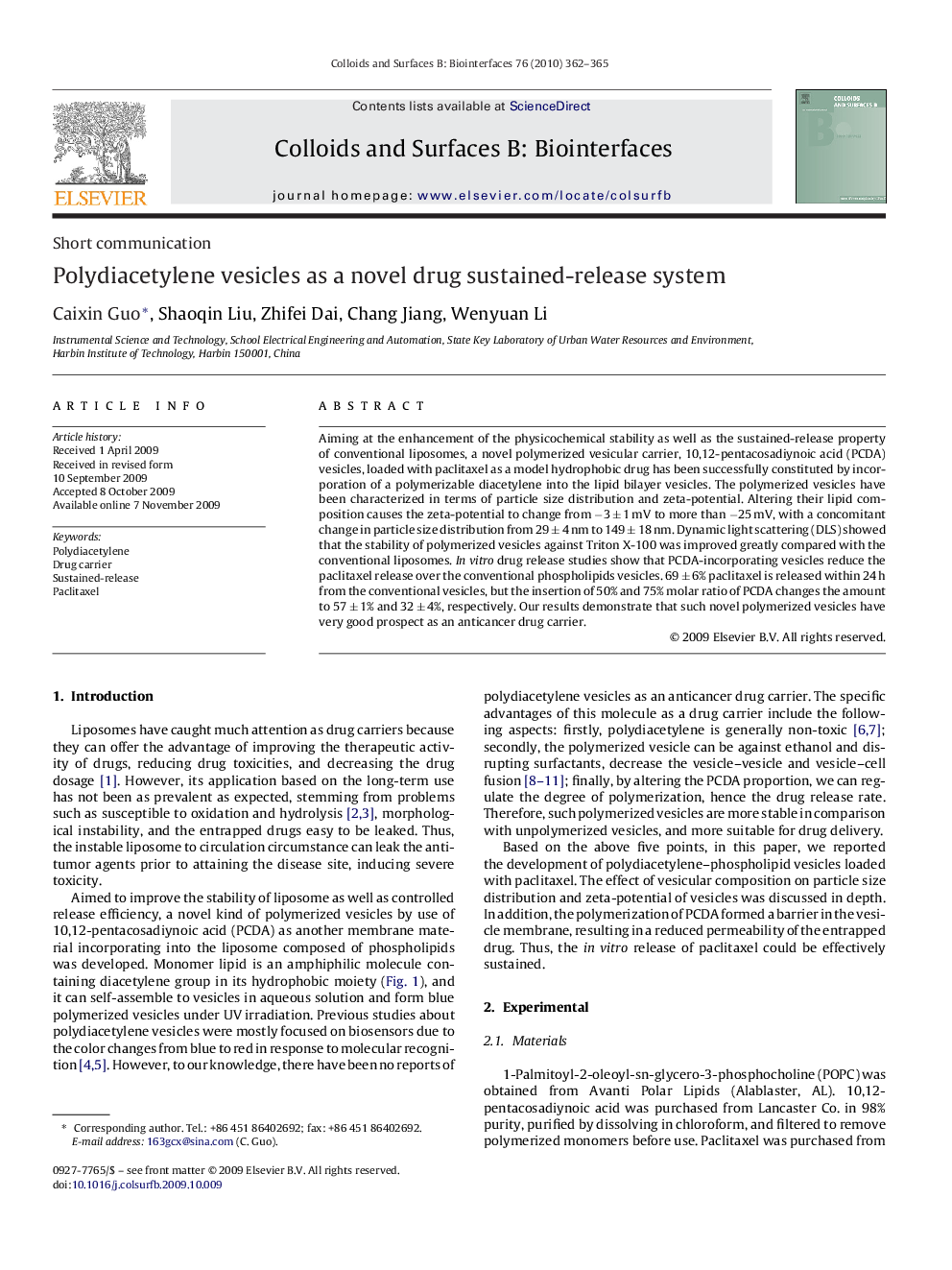| Article ID | Journal | Published Year | Pages | File Type |
|---|---|---|---|---|
| 602039 | Colloids and Surfaces B: Biointerfaces | 2010 | 4 Pages |
Aiming at the enhancement of the physicochemical stability as well as the sustained-release property of conventional liposomes, a novel polymerized vesicular carrier, 10,12-pentacosadiynoic acid (PCDA) vesicles, loaded with paclitaxel as a model hydrophobic drug has been successfully constituted by incorporation of a polymerizable diacetylene into the lipid bilayer vesicles. The polymerized vesicles have been characterized in terms of particle size distribution and zeta-potential. Altering their lipid composition causes the zeta-potential to change from −3 ± 1 mV to more than −25 mV, with a concomitant change in particle size distribution from 29 ± 4 nm to 149 ± 18 nm. Dynamic light scattering (DLS) showed that the stability of polymerized vesicles against Triton X-100 was improved greatly compared with the conventional liposomes. In vitro drug release studies show that PCDA-incorporating vesicles reduce the paclitaxel release over the conventional phospholipids vesicles. 69 ± 6% paclitaxel is released within 24 h from the conventional vesicles, but the insertion of 50% and 75% molar ratio of PCDA changes the amount to 57 ± 1% and 32 ± 4%, respectively. Our results demonstrate that such novel polymerized vesicles have very good prospect as an anticancer drug carrier.
